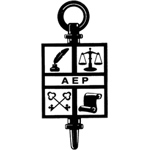Is your trusty vehicle showing signs of wear and tear? As a car owner, you may find yourself at a crossroads, wondering whether it's time to invest in repairs or start shopping for a new set of wheels. This decision can have significant financial implications and impact your daily life, so it's crucial to recognize the signs that your car may be nearing the end of its reliable service.
One of the most obvious indicators that your car needs attention is frequent breakdowns. If you find yourself calling for roadside assistance more often than you'd like, it might be time to evaluate your options. These recurring issues not only disrupt your schedule but can also pose safety risks and lead to mounting repair costs. Pay attention to unusual noises, vibrations, or changes in your car's performance, as these can be early warning signs of underlying problems.
Another critical factor to consider is the increasing cost of repairs. As your vehicle ages, parts wear out and become more prone to failure. If you're noticing that your repair bills are steadily climbing or that major components are failing one after another, it may be more cost-effective in the long run to consider replacement. Additionally, declining performance, such as decreased fuel efficiency or reduced power, can indicate that your car is struggling to keep up with modern standards and may benefit from an upgrade.
Safety should always be a top priority when it comes to your vehicle. If you're experiencing issues with crucial safety features like brakes, steering, or airbags, it's essential to address them immediately. Older cars may lack modern safety technologies that could provide better protection for you and your passengers. Recognizing these safety concerns early can help you make an informed decision about whether to invest in upgrades or opt for a newer, safer model.
Factors to Consider in Repairing or Replacing a Car
When faced with the decision to repair or replace your car, several key factors come into play. The age of your vehicle is a crucial consideration. Generally, cars over 10 years old or with more than 150,000 miles on the odometer may be nearing the end of their reliable service life. However, this isn't a hard and fast rule, as some well-maintained vehicles can last much longer. Consider your car's overall condition and reliability history. If it has been consistently dependable with only minor issues, it may be worth repairing. On the other hand, if you're experiencing frequent breakdowns or major system failures, replacement might be the more prudent choice.
A thorough cost analysis is essential in making an informed decision. Compare the projected expenses of potential repairs against the cost of purchasing a new or used vehicle. Remember to factor in not just the immediate repair costs, but also potential future maintenance needs. As a general guideline, if the cost of repairs exceeds 50% of your car's current value, or if you're spending more on annual repairs than you would on monthly payments for a new vehicle, it may be time to consider replacement. However, keep in mind that a new car comes with additional expenses such as higher insurance premiums and, in some cases, increased property taxes.
Safety should be a paramount concern in your decision-making process. Newer vehicles often come equipped with advanced safety features that weren't available when your current car was manufactured. These may include improved airbag systems, electronic stability control, backup cameras, and collision avoidance technologies. If your current vehicle lacks these safety enhancements, upgrading to a newer model could provide significant improvements in crash protection and accident prevention. Additionally, consider the performance aspects of your car, such as braking efficiency and handling. If these have noticeably deteriorated and can't be fully restored through repairs, it may be safer to opt for a replacement that offers better overall performance and reliability.
Long-Term Financial Implications of Repairing vs. Replacing a Car
When considering the long-term financial implications of repairing versus replacing your car, it's essential to look beyond the immediate costs. Depreciation plays a significant role in this decision-making process. New cars typically lose 20-30% of their value in the first year alone, with depreciation slowing down in subsequent years. By keeping your current vehicle and investing in necessary repairs, you may avoid this initial steep decline in value. However, it's crucial to weigh this against the potential resale value of your car. An older vehicle with a history of major repairs may have a lower resale value, which could impact your financial position when you eventually decide to sell or trade it in.
Future repair costs are another critical factor to consider. While it's impossible to predict every issue that may arise, you can get a sense of potential expenses by researching common problems for your specific make and model as it ages. Consult with a trusted mechanic to get an estimate of upcoming maintenance needs and potential major repairs. This information can help you create a more accurate long-term cost projection, allowing you to compare the cumulative expenses of keeping your current car versus the costs associated with a new vehicle purchase.
Environmental considerations should also factor into your decision. While it may seem counterintuitive, keeping an older car on the road can sometimes be more environmentally friendly than buying a new one. The manufacturing process for new vehicles requires significant resources and energy, contributing to carbon emissions and environmental impact. However, this must be balanced against the improved fuel efficiency and reduced emissions of newer models. If your current vehicle is significantly less fuel-efficient or fails to meet modern emissions standards, the environmental benefits of upgrading to a newer, more eco-friendly model may outweigh the impact of manufacturing. Consider researching the carbon footprint of both options to make a more informed decision.
To assess the overall value and sustainability of each option, create a comprehensive cost-benefit analysis. Factor in the current value of your car, estimated repair costs over the next few years, potential fuel savings with a new vehicle, and the environmental impact of both choices. Don't forget to consider your personal circumstances, such as how long you plan to keep the vehicle and your driving habits. By taking a holistic approach to this decision, you can make a choice that aligns with both your financial goals and your environmental values, ensuring the best long-term outcome for your unique situation.
Finding Reputable Mechanics and Exploring Alternative Options
When it comes to finding a reputable mechanic or dealership for repairs or replacement, doing your homework is crucial. Start by asking for recommendations from friends, family, or colleagues who have had positive experiences. Online reviews and ratings can also provide valuable insights, but be sure to read a variety of opinions to get a balanced view. Look for certifications from organizations like ASE (Automotive Service Excellence) for mechanics, or manufacturer certifications for dealerships. Once you've narrowed down your options, don't hesitate to ask questions about their experience, warranties, and pricing policies. A trustworthy professional will be transparent and willing to explain their recommendations and processes.
For those considering alternatives to traditional car ownership, several options are worth exploring. Leasing a vehicle can provide the benefits of driving a newer car with potentially lower monthly payments, though it comes with mileage restrictions and less flexibility. Car rental services offer short-term solutions for those who only need occasional access to a vehicle. Car sharing programs, which have gained popularity in urban areas, allow you to use a car for short periods without the responsibilities of ownership. These alternatives can be particularly attractive for those living in cities with robust public transportation systems or for individuals who don't require daily use of a vehicle.
Ultimately, the decision to repair, replace, or explore alternative transportation options should be based on your individual circumstances, financial situation, and long-term goals. Consider factors such as your daily commute, family size, budget constraints, and environmental concerns. Remember that what works best for one person may not be the ideal solution for another. Take the time to carefully evaluate all aspects of your situation, including the emotional attachment you may have to your current vehicle. By weighing all these factors and considering the information provided in this guide, you'll be well-equipped to make a decision that aligns with your needs and values, ensuring the best possible outcome for your transportation future.











